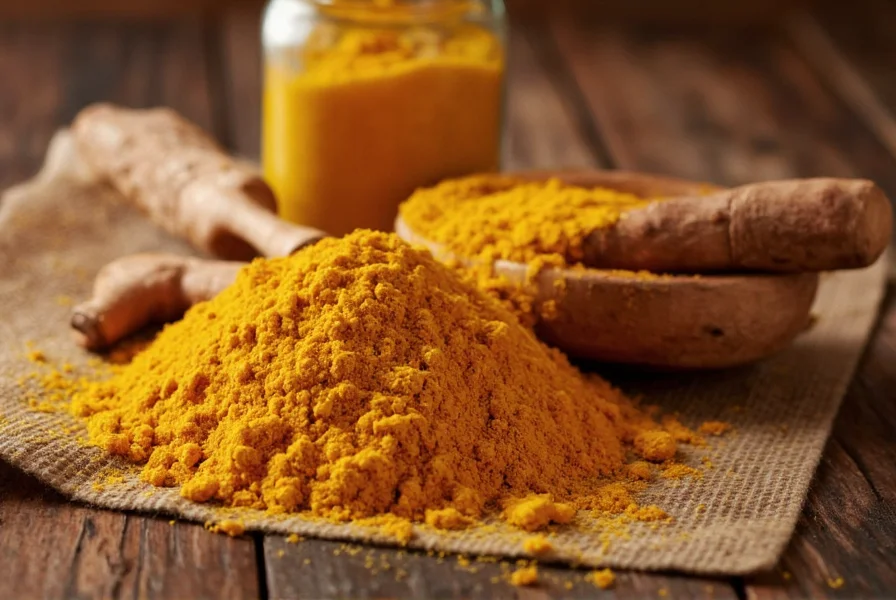The best time to take turmeric is with a meal containing healthy fats, ideally in the morning or early afternoon. Scientific research shows that curcumin, turmeric's active compound, has significantly improved absorption when consumed with fats and black pepper. Taking turmeric with food enhances bioavailability by up to 2000% compared to taking it on an empty stomach, while morning or early afternoon timing aligns with natural circadian rhythms for optimal metabolic processing.
Understanding the optimal timing for turmeric consumption requires examining both scientific research and practical application. Turmeric contains curcumin, a powerful compound with anti-inflammatory and antioxidant properties, but its effectiveness depends heavily on proper absorption. This comprehensive guide explores evidence-based recommendations for maximizing turmeric's benefits through strategic timing.
Why Turmeric Timing Matters for Maximum Benefits
Curcumin, turmeric's primary active component, has notoriously poor bioavailability when consumed alone. Research published in Planta Medica demonstrates that curcumin's absorption increases dramatically when combined with specific dietary factors. The timing of your turmeric intake affects not only how much your body absorbs but also how effectively it delivers therapeutic benefits.
Key Factors Influencing Turmeric Absorption
Three critical elements determine how well your body utilizes turmeric:
| Factor | Impact on Absorption | Optimal Approach |
|---|---|---|
| Fat content | Increases absorption by up to 700% | Take with healthy fats (avocado, olive oil, nuts) |
| Piperine (black pepper) | Boosts bioavailability by 2000% | Include 20mg piperine with turmeric dose |
| Empty vs full stomach | Food increases absorption 4-8x | Always consume with meals |
Morning vs. Evening: Timing Considerations
While both morning and evening consumption have benefits, research suggests morning intake provides several advantages:
- Enhanced daytime protection - Morning consumption aligns with natural inflammatory cycles, providing protection throughout active hours
- Better circadian alignment - Your digestive system processes nutrients more efficiently earlier in the day
- Avoiding potential sleep disruption - Some users report mild stimulation from high-quality turmeric supplements
- Consistent daily routine - Taking supplements with breakfast creates reliable habit formation
However, if using turmeric specifically for evening relaxation or joint comfort during sleep, taking it with dinner remains effective as long as combined with healthy fats.
Optimal Turmeric Consumption Protocol
Based on current scientific understanding, follow this evidence-based approach for best results:
- Take turmeric with your largest meal containing healthy fats (breakfast or lunch)
- Ensure your supplement contains piperine (black pepper extract) or add freshly ground pepper to homemade preparations
- Avoid taking turmeric on an empty stomach, which can cause gastrointestinal discomfort
- Space doses 8-12 hours apart if taking multiple times daily
- Consider dividing daily dosage between morning and early afternoon meals
Special Considerations for Different Health Goals
The ideal timing may vary slightly depending on your specific health objectives:
| Health Goal | Recommended Timing | Additional Protocol |
|---|---|---|
| General inflammation reduction | Morning with breakfast | Combine with omega-3 rich foods |
| Joint pain management | Morning and early afternoon | Add ginger for synergistic effect |
| Digestive health support | 30 minutes before meals | Use in golden milk formulation |
| Cognitive function enhancement | Morning with protein-rich meal | Avoid late evening consumption |
Common Mistakes to Avoid with Turmeric Timing
Many people unknowingly reduce turmeric's effectiveness through these timing errors:
- Taking turmeric on an empty stomach, causing poor absorption and potential stomach upset
- Consuming turmeric without fat-containing foods, reducing bioavailability by up to 95%
- Taking turmeric late at night, potentially interfering with sleep quality
- Spacing doses too closely together, overwhelming metabolic pathways
- Combining with calcium-rich foods simultaneously, which can inhibit absorption
Practical Implementation Tips
Integrating optimal turmeric timing into your daily routine doesn't need to be complicated. Try these simple strategies:
- Add turmeric to your morning scrambled eggs or avocado toast
- Prepare golden milk with coconut milk for afternoon consumption
- Take supplements with your largest meal containing healthy fats
- Set phone reminders for consistent daily timing
- Track your response in a journal to identify your personal optimal timing
Remember that consistency matters more than perfect timing. Regular daily consumption provides better results than occasional perfect timing. The key is establishing a sustainable routine that incorporates turmeric with appropriate food pairings at consistent times each day.

Understanding Turmeric's Half-Life and Duration of Effects
Curcumin has a relatively short half-life of approximately 6-8 hours in the bloodstream. This explains why dividing your daily dosage provides more consistent therapeutic levels throughout the day. Research in the Journal of Pharmacy and Pharmacology indicates that maintaining steady curcumin levels through strategic timing yields better outcomes than single large doses.
When to Consult a Healthcare Professional
While turmeric is generally safe for most people, consult with a healthcare provider before starting supplementation if you:
- Take blood-thinning medications
- Have gallbladder issues
- Are pregnant or breastfeeding
- Have scheduled surgery within the next two weeks
- Experience persistent gastrointestinal discomfort











 浙公网安备
33010002000092号
浙公网安备
33010002000092号 浙B2-20120091-4
浙B2-20120091-4